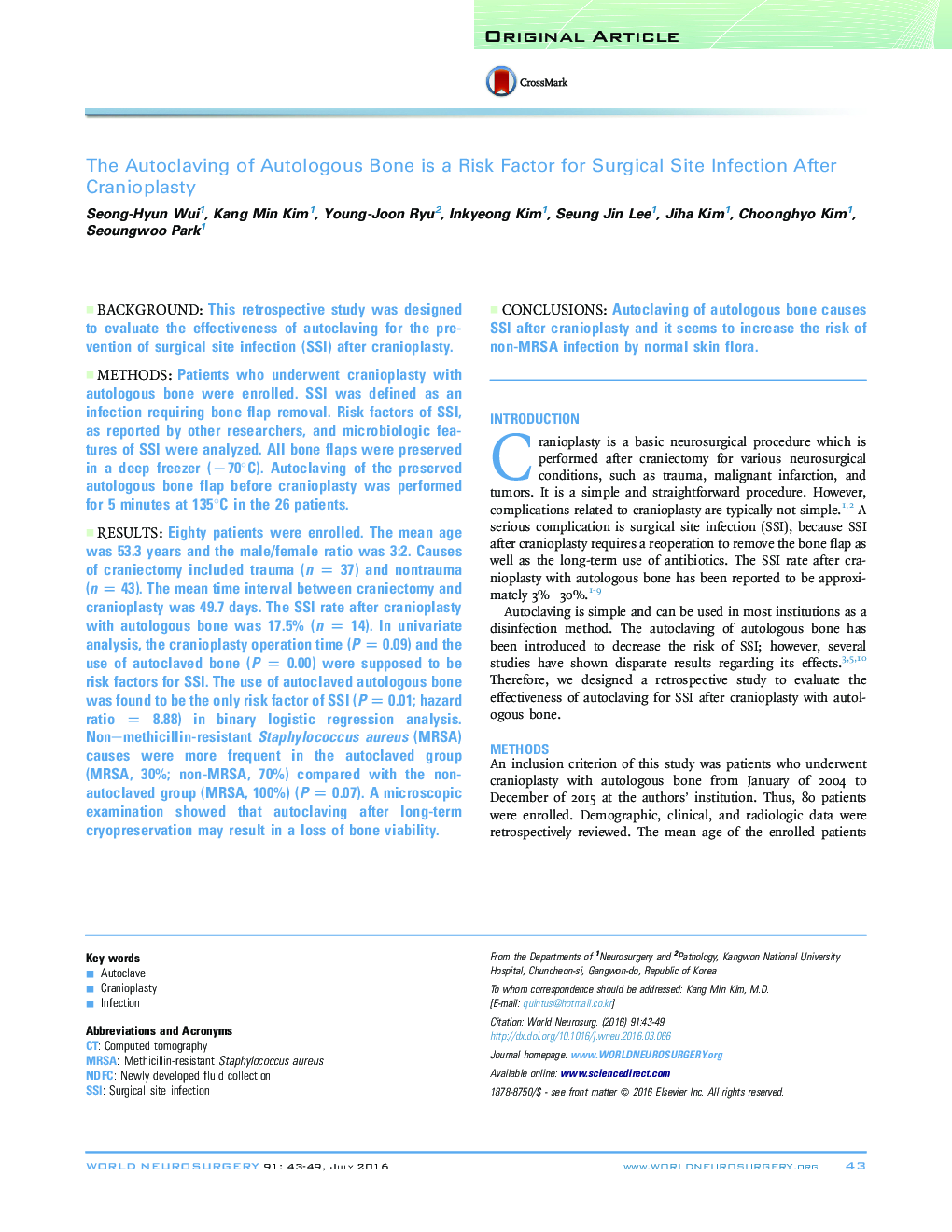| Article ID | Journal | Published Year | Pages | File Type |
|---|---|---|---|---|
| 3094525 | World Neurosurgery | 2016 | 7 Pages |
BackgroundThis retrospective study was designed to evaluate the effectiveness of autoclaving for the prevention of surgical site infection (SSI) after cranioplasty.MethodsPatients who underwent cranioplasty with autologous bone were enrolled. SSI was defined as an infection requiring bone flap removal. Risk factors of SSI, as reported by other researchers, and microbiologic features of SSI were analyzed. All bone flaps were preserved in a deep freezer (−70°C). Autoclaving of the preserved autologous bone flap before cranioplasty was performed for 5 minutes at 135°C in the 26 patients.ResultsEighty patients were enrolled. The mean age was 53.3 years and the male/female ratio was 3:2. Causes of craniectomy included trauma (n = 37) and nontrauma (n = 43). The mean time interval between craniectomy and cranioplasty was 49.7 days. The SSI rate after cranioplasty with autologous bone was 17.5% (n = 14). In univariate analysis, the cranioplasty operation time (P = 0.09) and the use of autoclaved bone (P = 0.00) were supposed to be risk factors for SSI. The use of autoclaved autologous bone was found to be the only risk factor of SSI (P = 0.01; hazard ratio = 8.88) in binary logistic regression analysis. Non–methicillin-resistant Staphylococcus aureus (MRSA) causes were more frequent in the autoclaved group (MRSA, 30%; non-MRSA, 70%) compared with the nonautoclaved group (MRSA, 100%) (P = 0.07). A microscopic examination showed that autoclaving after long-term cryopreservation may result in a loss of bone viability.ConclusionsAutoclaving of autologous bone causes SSI after cranioplasty and it seems to increase the risk of non-MRSA infection by normal skin flora.
